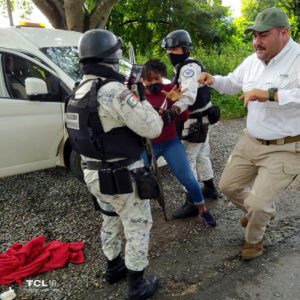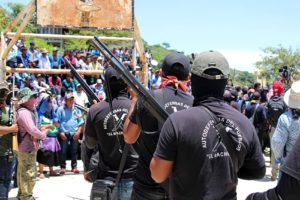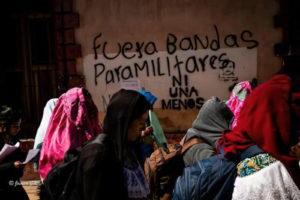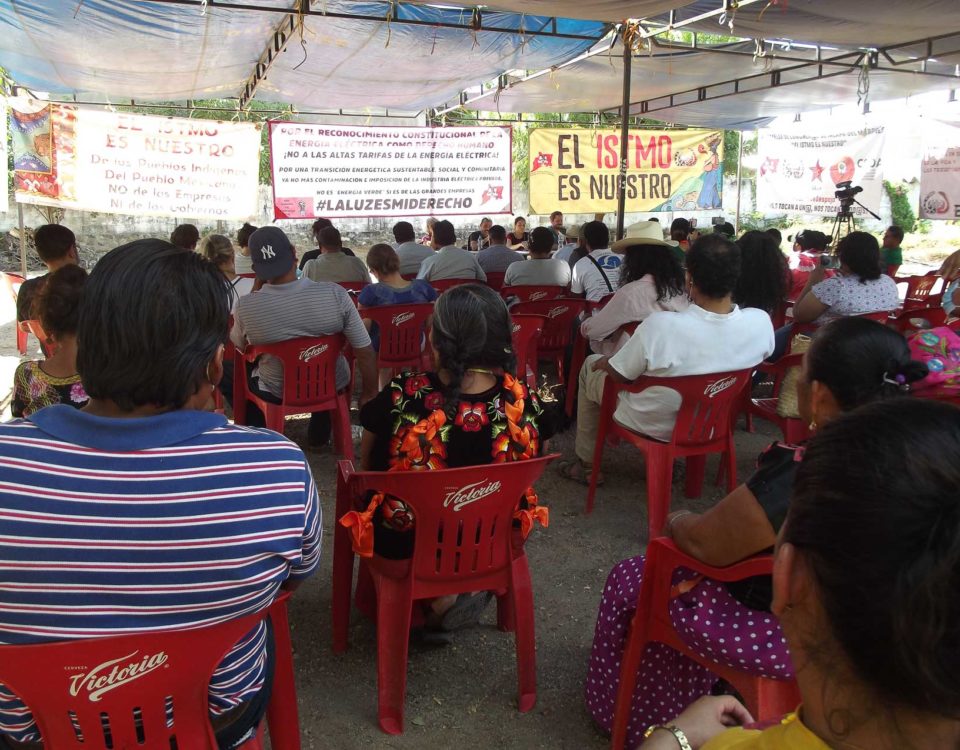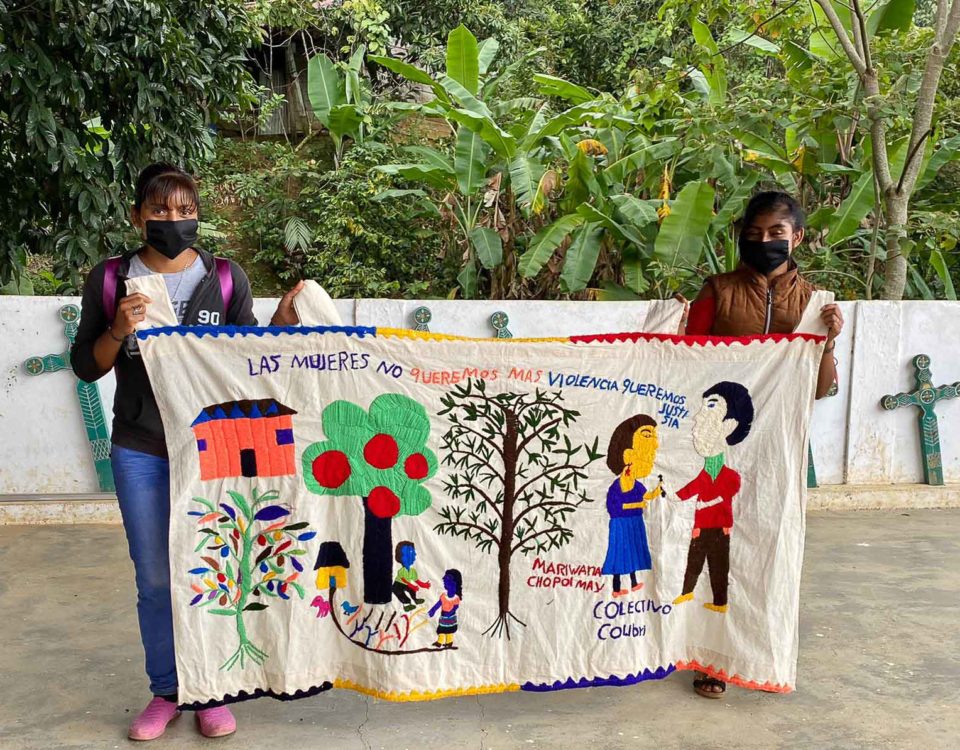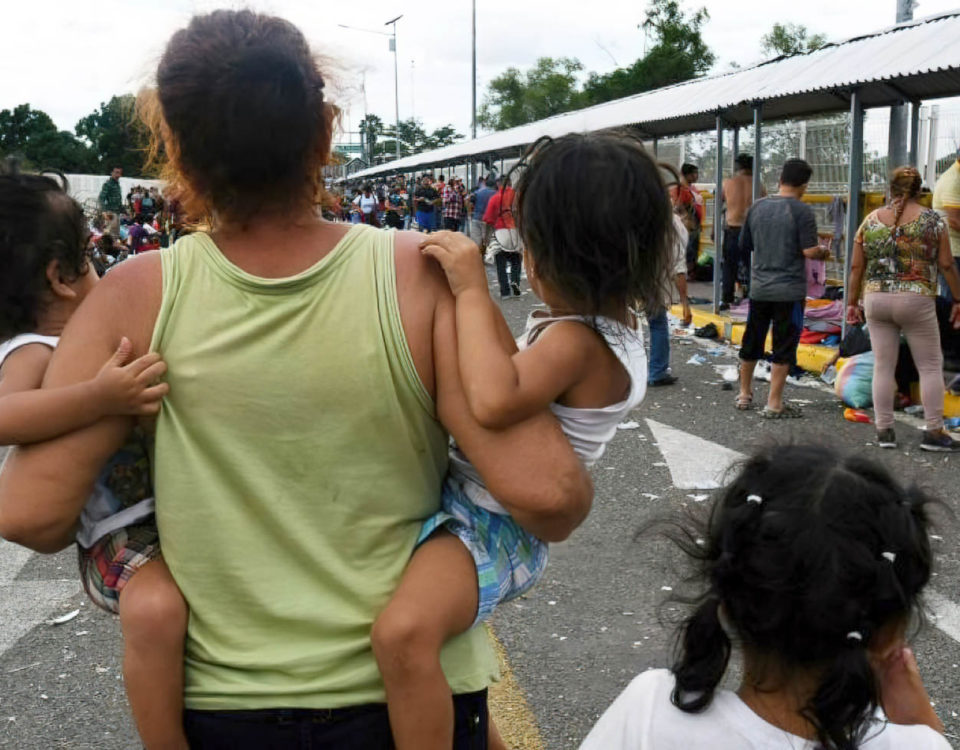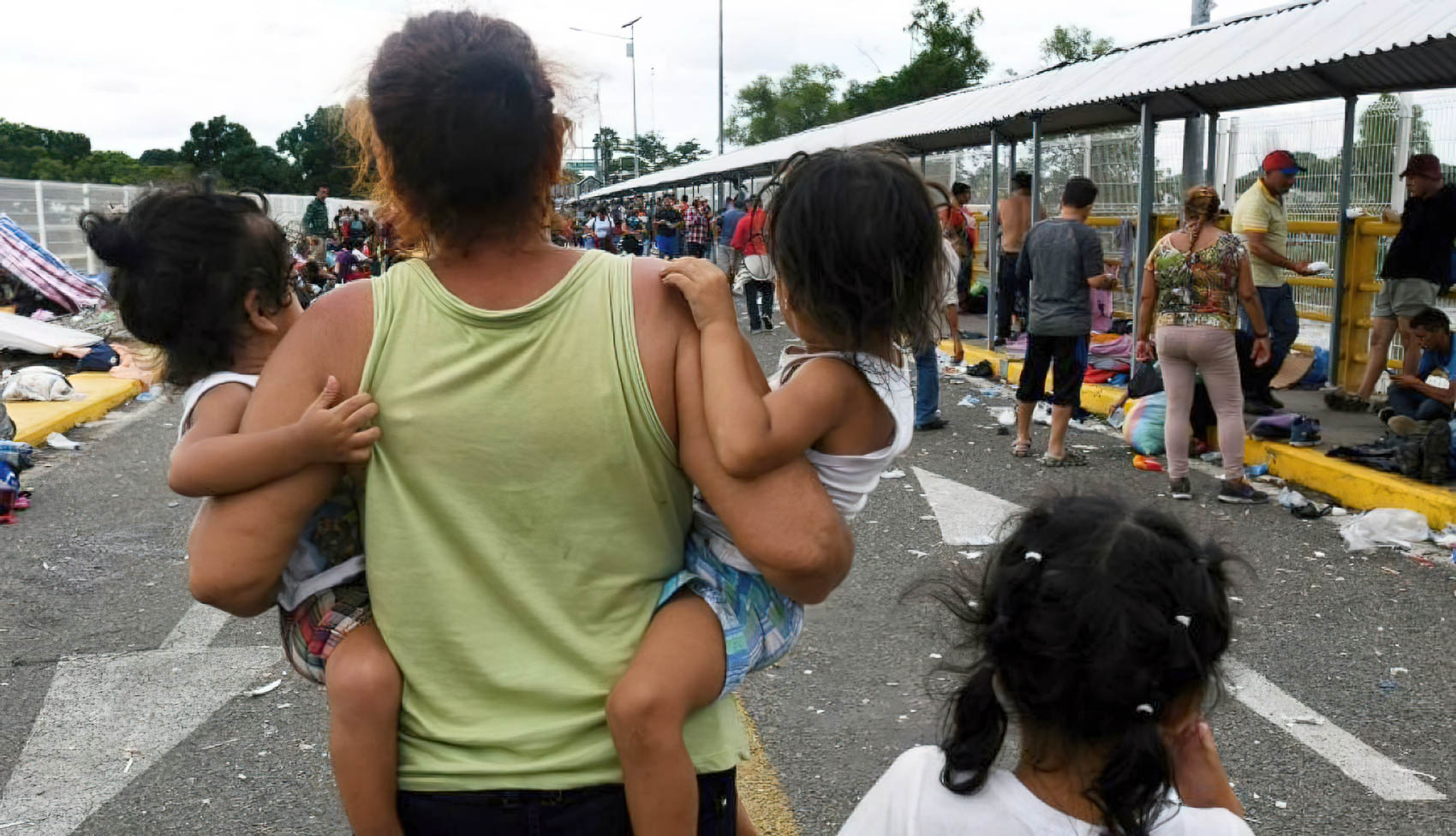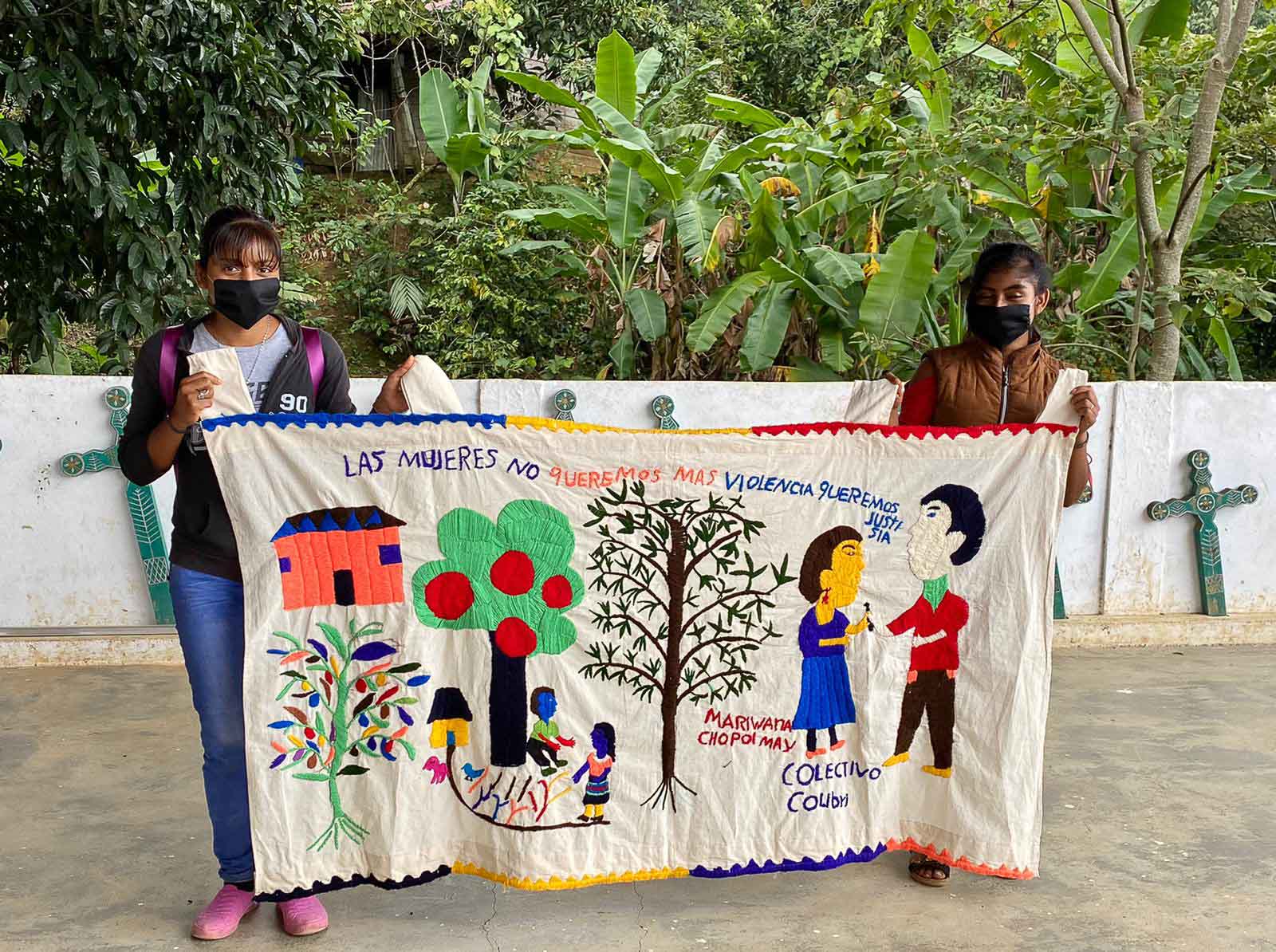The murmur of the stones is heard,
A silent whistle reaches the ear in the morning
Ruperta Bautista Vásquez
I f we have the chance to see some documentary that shows us images of the decades of the ’60s and ’70s in Chiapas, it is not difficult for us to stop thinking that those same takes could have been filmed today. More than 50 years after those original takes, in many regions of the state, the clock has stopped. But more than time, justice.
The wall against which the clocks were broken in much of the south of the country is the wall of structural violence. In this way, behind most of the conflicts in Chiapas, we find political, social and cultural and economic marginalization, the same marginalization that has worsened as a result of the COVID-19 pandemic, particularly with regard to access to health and education.
According to the National Council for Evaluation of Social Development Policy (CONEVAL), of the total population of Chiapas in 2020 75.5% were in poverty, and 29% in extreme poverty. The latter figure, incidentally, only decreased by 1.6% compared to 2018.
If we look at social deprivation, more than a third of the population (32.5%) shows educational disadvantage; less than 40% of the population has access to health services; less than 80% have access to social security; only 20% benefit from quality housing; just over half the population (55.8%) have access to basic housing services; and less than a quarter of the population (24.5%) have access to quality food.
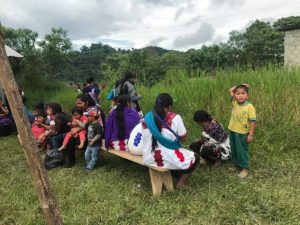
Communities in a situation of forced displacement: one of the faces of the violence and impunity that prevail in the state © Chiapas Paralelo
These figures are only the most superficial and measurable face of historical and widespread segregation that have faced different communities and social groups in Chiapas. And if we add to this, as pointed out by the Observatory of Democracies for southern Mexico and Central America (ODEMCA), the wave of violence that blunted the war on drugs declared since 2006 as well as the geopolitical subordination to the scheme of regional security of the United States, it seems that we have the perfect recipe of ungovernability. The icing on the cake (or perhaps a much more basic ingredient such as flour or egg) is the increasingly prominent role of organized crime.
For Gerardo Alberto Gonzalez Figueroa, a researcher at the Department of Health of El Colegio de la Frontera Sur (ECOSUR), “Chiapas became in the last four or five decades, not only the pathway of the cocaine that came from (Central and) South America, but a fertile ground for heavyweight capos to have their way.” However, since 2000, Gonzalez Figueroa mentions, two cartels carved up control over the route from the Highlands to the Gulf of Mexico, while another took control of the entire Chiapas coast connecting with the Pacific Ocean.
Criminal groups that have been identified with presence in Chiapas are the Zetas, the Gulf Cartel, the Beltran Leyva Cartel, and more recently and powerfully, the Sinaloa Cartel and the New Generation Jalisco Cartel. It also highlights the consolidation of local groups who have amassed presence and power, such as the San Juan Chamula Cartel, which also has greatly diversified its criminal enterprises.
In this sense, one can observe a worrying increase in insecurity and violence associated with organized crime in Chiapas, coupled with schemes of “collusion and filtration of drug trafficking to the most diverse spheres of government and its institutions”, as the ODEMCA points out.
Such institutional weakness in the state was clearly expressed when high levels of violence were recorded in the elections last June, which placed Chiapas in thirteenth place with more cases of assassinations of politicians and the prevention of the installation of 232 voting centers. In addition, it perceived involvement of organized crime in funding and appointment of candidates for political office as increasingly more open.
The Layers of Complexity
The map of the conflict in Chiapas is constantly reconfigured and in a very diffuse manner, as was reported within the framework European Union ambassadors’ visit to Chiapas on November 11th. Given the networks of participation of organized crime, the State, or companies that want to protect their interests, the work of coverage of these processes by journalists is very high risk. Assaults, threats, bribery attempts have been documented, and many cases are not denounced for fear of reprisals. This has caused the creation of “areas of silence” and self-censorship, so that information is not always easy to access.
Not to mention the work of human rights defenders, who are also under constant siege by these players, and in this framework the murder of Simon Pedro Pérez stands out, a member of the civil society organization Las Abejas de Acteal. This highlights the insufficient response of the three levels of government to guarantee the exercise of the defense of human rights in a safe and propitious environment. In this regard, it should be noted that the impunity index for cases of assassinations of journalists and activists in the country is 99%.
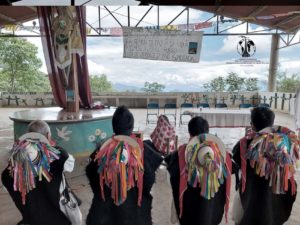
Las Abejas de Acteal denounce the role of the Chiapas State Attorney General’s Office, which has not been able to clarify the case of Simon Pedro Perez or bring anyone to justice © Las Abejas de Acteal
For its part, the problems observed in peoples and communities in Chiapas mix agrarian conflicts that have been unresolved for years, even decades; problems of political confrontation, which often go hand in hand with community division (even with the component of government programs as a conflict catalyst). To this is added the state’s remilitarization (strongly militarized since the 90s), which has involved the reinforcement of the southern border since 2019 with more than 11 thousand federal troops, increasing the risk of harassment to communities, gender violence and violations of human rights. An example of this is the killing of a Cuban migrant in the municipality of Pijijiapan at the hands of a member of the National Guard at the beginning of November.
Linked to the latter, the increasingly restrictive policies of rights to the migrant population stand out, through the detention, containment, repression, and deportation of persons on the move without recognizing their needs for international protection. In this way, the militarization of borders implies greater risks to the safety of people seeking decent protection and life, meeting in Mexico with corruption and inaction of programs and institutions that should see to them.
On the other hand, we must add the power that local caciques have had for decades, and the other side of the coin: the lack of ability of the authority that “is exceeded before the Balkanization of the territory where it cannot be imposed because the legal or illegal groups are disputing power hand to hand, as well as the control of the territory”, as ODEMCA tells us, and points out that it is “in this archipelago of struggles and fragmentary powers, but capable of imposing themselves, where a galloping impunity thrives that paradoxically demonstrates the great institutional fragility and the high degree of reducing protection for Chiapas Society as a whole.”
Finally, all these elements are boiled to the temperature of impunity and the difficulty in accessing the justice system, in which the torture is exercised systematically as a method of investigation and control. Forced disappearance is a cutting reality: November 22nd, 2021, 505 people have been registered as missing and not located in the state of Chiapas; and mass forced displacement is a living reality for about 14,776 people in Chiapas, on many occasions linked to violence by armed groups.
One of the cases that exposes more alarmingly the dysfunctionalities of the justice system that civil society organizations such as Frayba have repeatedly indicated, was the murder, which occurred on August 10th, of the Indigenous Justice Prosecutor, Gregorio Perez Gomez, who was in charge of the Pantelho investigation, where since the end of July an escalation of violent acts was raised.
Conflict Zones
The conditions of deep deterioration and ungovernability in several areas in Chiapas are condensed in conflicts, of an armed nature on numerous occasions. Among those which are currently active are the cases of Aldama, Pantelho, Chenalho, Venustiano Carranza, Simojovel, San Cristobal de Las Casas, Ocosingo and Altamirano. These are municipalities that, among other things, are the scene of shootings, attacks, kidnappings and displacement.
The conflict between Aldama and Santa Marta (the latest part of the municipality of Chenalho) has kept the inhabitants of these locations in a crossfire that has left a toll of several dead, injured, displaced families, and a dense environment of siege and fear.
For its part, as Hermann Bellinghausen points out, in Ocosingo, the once coffee growers organization ORCAO “continues harassment, sabotages, kidnappings, shootings, blockages and robberies of plots against the Zapatista bases of autonomous Tseltal communities.” In this context, on “September 11th they abducted Sebastián Nuñez and Jose Antonio Sanchez, members of the Autonomous Zapatista Government of Nueva Patria.”
A case that stands out for being particularly sui generis, is that of San Juan Chamula, which even has a denomination of origin for its own cartel, which according to the special investigation of journalist Christian Gonzalez “controls a large part of production and distribution of narcotics, theft of vehicles and auto parts, (people)trafficking, weapons, fuels and wood, as well as the sale of (pornographic) material.” As we can see, this highlights the diversification of criminal activities, which go beyond drug trafficking. The networks through which this criminal group extends include the area of the Highlands, Comitan, the Jungle, and even crosses the border with Guatemala.
And so we come to the case of San Cristobal de Las Casas, where in recent months there has been a worrying increase in violent acts, among which are the murders of the Attorney of Indigenous Justice, of journalist Fredy Lopez Arevalo, and the Italian volunteer Michele Colosio. Added to this is the presence of armed groups that roam the city, and the intermittent clashes and shots that are lived in several areas of the locality.
Then there is the case of Tuxtla Gutierrez, the capital of the State, where a shootout occurred in broad daylight on July 7th, as a result of what is presumed was a confrontation between two criminal groups that are disputing control of the area.
Cases that have attracted the attention of public opinion in recent months have been Pantelho and Chenalho, where for years, but especially in recent months there is a dense climate of violence due to the takeover by criminal groups linked to the drug trafficking and other illicit activities. This situation had already been exposed in a formal report to the Secretariat of Government, thanks to the work of Simon Pedro Perez Lopez.
The list is not short, we could continue with the cases of Tapachula and Comalapa border, but we would still be missing a good part of places where the absence of the State is experienced. As the Observatory points out, “the immediate scenario points to a (context) of latent and growing violence, to the extent that the responses of the Government of Chiapas and the Federal Government are kept in a veiled silence that does not result in setting out an explicit strategy to tackle the armed explosion. Meanwhile, the National Guard and the Mexican Army increase their presence in the state, without reflecting an explicit change in control and territorial regulation that the affected populations can note.”
Corollary. The Emergence of Self-defense Groups
The political and security crisis in several of these areas has generated the formation and public appearance of self-defense groups. To date, four of these groups have been announced. The first was El Machete in Pantelho, which was announced on July 10th after a series of confrontations of the community against the Herrera Group, noted for its links to organized crime and which has facilitated the environment of violence and insecurity in the area. This group has also been linked to figures in power, such as Mayor Delia Janeth Velasco Flores and the Mayor elect, Raquel Trujillo Morales, who was not recognized the communities, who then elected a Municipal Council (which was legally recognized by The Congress of Chiapas) to govern until an authority they themselves elect under the scheme of uses and customs is designated.
This conflict generated a serious crisis of displacement in the region, as registered the Fray Bartolome de Las Casas Center for Human Rights: approximately two thousand Tsotsils of the municipalities of Pantelho and Chenalho were displaced by the generalized violence of organized crime and the omission of the Mexican state to address the situation.
Continuing the topic of the public appearance of self-defense groups, on September 29th, a video was released in which the People of the Jungle group was presented, supporting El Machete. However, information on its territorial ascription is not clear and if there is support from civil society in such an area.
The last two groups were announced at the beginning of the same month: on October 3rd, the self-proclaimed Simojovel Armed Forces were formed and the Altamirano Self Defense Group was also presented on October 7th. The latter expressed their intention to expel the Pinto (Kanter) family from that municipality.
It is relevant to note that in the cases of Pantelho, Altamirano and Simojovel, the self-defense groups did not only rise against the insecurity and violence lived in their communities, but also did so in order to prevent elected authorities from taking office. As ODMECA points out, there are new populations that “demand the formation of municipal councils and horizons are opened that could support the formation of community governance councils that displace the corrupt structure of the system of political parties.”
In this sense, as the Observatory of Democracies questions, we still do not know if they will be processes where the capacity of civilian management prevails to strengthen the horizons of autonomy and indigenous self-determination or if on the contrary, “it will only add to a greater concentration of armed populations that, under the diffuse notion of self-defense and the coloniality of arms, ends up increasing barriers to a civilian population that is trapped in the midst of violence and (for) increasing militarization.”
A Parallel View
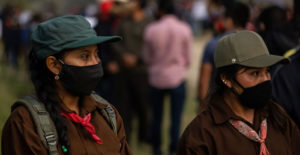
The EZLN speaks out against the context of violence that reigns in Chiapas © Isabel Mateos / Cuartoscuro
Faced with this scenario, the Zapatista Army of National Liberation (EZLN) has given a forceful message. In its communiqué on September 19th, 2021, it warns that Chiapas is on the verge of civil war. It produced a diagnosis on the scenario of violence in the state and warns about the coming escalation of violence and the need for a strong response by the “bad government” to stop it. They point out that the Government maintains “alliances with drug trafficking (which) cause the indigenous communities to be forced to form self-defense groups” and also that it “promotes and finances paramilitary groups such as those who continually attack communities in Aldama and Santa Martha.” Local police officers are null or accomplices, as suggested by Subcommander Galeano and they denounce government inaction, which “fans and encourages” crimes like the kidnapping of two members of the Nueva Patria Good Government Council (JBG), Municipality of Ocosingo, which occurred on September 11th.
As Hermann Bellinghausen says, “it is evident that federal civil authorities, their National Guard and the Federal Army itself are permissive, and in fact they leave the dozens of assaulted communities helpless.”
Finally, the EZLN denounces corruption and the theft of public officials, and holds the MORENA Governor, Rutilio Escandon, directly responsible for this irresponsible and dangerous lack of control in the state.
In short
In Chiapas, the consequences of historical discrimination that has particularly affected communities and indigenous peoples can be seen, and this has resulted in the prevalence of contexts of marginalization and multidimensional poverty and in a continuum of violence and serious violations of human rights. Its perpetration comes from both the State and the agents of organized crime and companies: the Trinity with the same face that is often confused, and that has infiltrated the structures of institutional and socio-community organization.
Impunity is a constant and does nothing but increase the tide of conflict in the state, which is a rough sea of political parties and family cacicazos linked with drug trafficking, government inaction and sustainment of paramilitary groups and an illegitimate electoral system.
To continue sailing on this swell is unsustainable. However, a lighthouse of hope is found in the communities that have organized themselves in favor of their human rights and for the defense of land and territory. What is lacking for the alarm bells to stop sounding and for the responsible players to begin to assume their responsibility?

